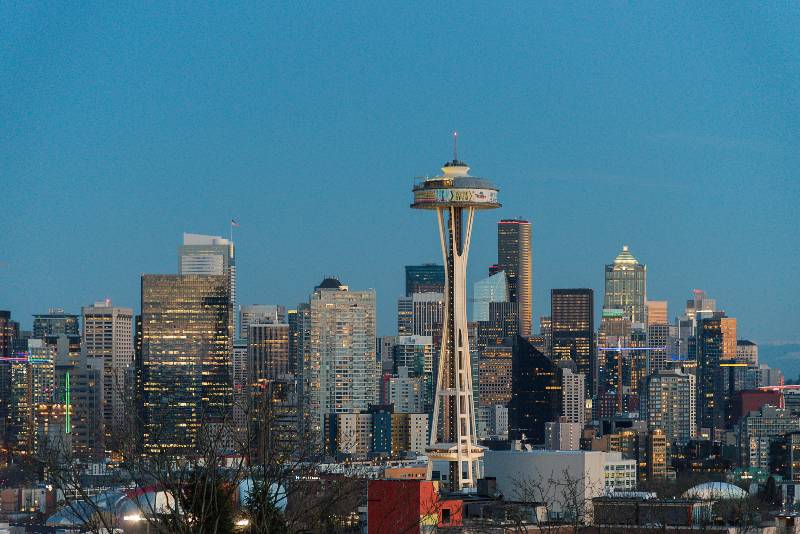As a commercial real estate expert with over 18 years of experience, I’ve watched co-living emerge as an intriguing housing innovation addressing the needs of young mobile urbanites in expensive cities like Los Angeles. Here’s my insight into the accelerating rise of co-living in LA.
Key Takeaways
- Co-living is a form of housing with private bedrooms and shared common areas, offering benefits like affordability, community, and flexibility.
- Los Angeles is seeing rapid growth in co-living fueled by high rents and an influx of young professionals seeking community-oriented living.
- Downtown LA, Hollywood, and Westside neighborhoods are co-living hotspots, with adapted warehouses and new builds.
Introduction to Co-living
Let’s start with the basics – what is co-living? It’s a form of shared housing that combines private bedrooms with shared communal living areas and amenities. Picture a hybrid between student dorms and young professional apartments. Co-living spaces aim to foster meaningful connections and a sense of community through shared interests and values among residents.
While not a new concept, co-living has seen a revival in recent years, especially in major cities with soaring housing costs like LA. The model offers a more affordable, convenient, and socially oriented living solution tailored towards mobile urban dwellers like students, entrepreneurs, artists, and tech workers.
With smaller private quarters and expansive common areas, most daily functions happen in shared lounges, co-working spaces, living spaces, kitchens, and even gardens and rooftop lounges. It’s about open collaboration. Leases also emphasize flexibility – lasting days, weeks, or months to meet the transient lifestyles of residents.
Now let’s look at how LA became a prime market for the expansion of these shared communities.
The Evolution of Co-living in Los Angeles
Los Angeles has quickly emerged as a national hub for co-living innovation. Its compact, creative, and prohibitively pricey housing landscape has fueled the need for alternative living solutions.
Several key events mark the progression of co-living:
- 2012 – Local LA entrepreneur Elvina Beck launches PodShare, providing bunk beds and lockers in shared homes across central neighborhoods. Her accessible model targeting “transitioners” helps cement LA’s early reputation as a co-living hotspot.
- 2016 – WeLive arrives in LA, a coliving offshoot of coworking firm WeWork. WeLive brings stylish and amenity-packed private studios with a luxury feel, raising the bar for design and service.
- 2020 – The COVID-19 pandemic pauses LA’s co-living surge. Lockdowns increase hesitation towards shared residences. Operators like PodShare pivot their models to remain viable.
- 2023 – LA co-living bounces back stronger than ever as rents climb over pre-pandemic levels. New major developments open across Downtown, Hollywood, and West LA from leading local and international providers.
Today’s LA co-living landscape is defined by two prime models catering to different segments – no-frills dorm-style spaces like PodShare focused on maximum affordability, and lavish spaces with hotel-style perks like Common offering premium urban living.
Let’s compare co-living setups to regular market rentals in LA to demonstrate the unique advantages:

Comparing Co-living and Traditional LA Rentals
| Amenity | Traditional Apartment | Co-living Space | ||
|---|---|---|---|---|
| Cost | $1,700+ average for 1 bed in LA | Around $1,100 per bed in a shared suite | ||
| Lease Terms | 6-12 months standard | As short as 1 week or month-to-month | ||
| Private vs. Shared | 100% private | Small private room + shared common areas | ||
| Utility Costs | Resident pays all | All-inclusive rent, utilities included | ||
| Furnishings | Unfurnished unit | Fully furnished or partly furnished unit | ||
| Cleaning | Resident responsibility | Regular professional cleaning service | ||
| Community | Isolation easier as solo renter | Built-in community events and social interaction with other residents |
With smaller individual spaces balanced by amenities, community, and flexibility, LA co-living can offer comparative bang for buck, especially when considering hidden costs like furnishing and utilities. Renting a private apartment in LA can easily approach $2,000+ per month while a co-living bed may cost under $1,200. The communal element also appeals to renters feeling isolated or craving collaboration.
Why LA is Primed for Co-Living Expansion
The LA market possesses several unique traits spurring the appetite for co-living:
1. Housing Supply vs. Demand Imbalance
LA household incomes haven’t kept pace with surging rental prices. You’d need to earn $122K annually to afford the average one-bedroom based on expert recommendations to spend 30% of income on housing. With far more workforce renters than units available citywide, hyper-competitive bidding leaves many seeking unconventional options.
2. Influx of Young Creatives
LA remains a beacon for artists, innovators, entrepreneurs. Survey data identifies Gen Z and Millennials as most receptive to coliving given their mobility. LA saw the largest growth in Millennials of any US metro from 2015 to 2019. These digitally native generations likely view shared living as second nature.
3. Need for Flexible Lifestyles
Short-term projects bring many entertainment and creative contractors to LA without clarity on long-term plans. Tourists also contribute to the transient population. Co-living answers the call for housing aligned with flexible work and lifestyles.
4. Existing Culture of Collaboration
Shared workspaces already thrive in LA, especially in the growing network of cool new hybrid spaces fusing live, work, and create. LA co-living is the residential evolution of that collaborative culture.
The appeal is also evident in the urban layout and building infrastructure intrinsic to LA…
Design Innovations in LA Co-living
Two signature features give many LA co-livings a stylish design edge:
- Adaptive Reuse – Developers transform old warehouses, factories, and office blocks rather than building anew. Preserving architectural heritage while reimagining interiors.
- Sustainability – Environmentally friendly features like solar panels, water conservation, and renewable materials. Embracing LA’s eco-conscious values.
Most spaces optimize limited square footage through warm, minimalist decor. More private bedrooms than extensive common lounges. Let’s explore blossoming LA neighborhoods advancing co-living:
Key LA Neighborhoods Driving Co-Living Growth
Downtown LA
LA’s resurging urban core draws creatives for iconic architecture and ample amenities. Arts District offers many converted industrial spaces like Lyric, balancing gritty and lively.
Hollywood
Young entertainment hopefuls flock to this world-famous area. New developments like Vera offer luxury living with nightlife convenience.
Westside (Santa Monica, Westwood, Sawtelle)
These posh coastal suburbs attract university students and Silicon Beach tech workers to upmarket projects like MTGA Santa Monica.
Beyond prime areas, more niche LA neighborhoods are welcoming co-livings too. Overall supply struggles to match interest from real estate investors and residents.
The Future of Co-Living in LA
While still an emerging model, LA co-living appears well-positioned for long-term expansion:
- New development continues across LA in anticipation of surging demand as concepts become more mainstream.
- Evolving business models like existing brands diversify into hotel, office, and retail spaces under integrated mixed-use banners.
- Innovation around building features, unit configurations, community programming, and virtual interfaces.
Yet co-living also faces challenges around zoning, safety standards, permit complexity in adapting existing properties. Striking the right balance between privacy, personalization and meaningful community connection can also prove tricky.
If the industry responds creatively to opportunities however, LA will likely cement itself as America’s shared living capital for decades to come.
I hope this overview has provided valuable real estate perspective on the meteoric growth of co-living in Los Angeles. Please don’t hesitate to get in touch if you have any other questions!
Choosing the Right Co-Living Space in Los Angeles
When selecting a co-living apartment in LA, you’ll want to consider things like location, amenities, room types, and community vibe. Westside spaces tend to be more upscale while Hollywood and Downtown offer easy access to nightlife and entertainment. Make sure to understand lease terms too since co-living offers more flexibility than typical year-long rentals.
Factors to Consider When Selecting a Co-Living Apartment
Key factors include location and surrounding neighborhood, room furnishings and layouts, community events and social atmosphere, availability of private versus shared rooms, included amenities like laundry, gym, co-working space, and costs like rent, deposits, fees.
Comparing Co-Living Options in Different Neighborhoods of LA
Downtown, Hollywood, and Westside neighborhoods all offer co-living but cater to different lifestyles based on local attractions and resident mix – students, young professionals, creatives. Make sure the vibe and people match what you’re looking for.
Features and Furnishings of Co-Living Apartments
Furnishings, features, and finishes can vary widely between basic affordable spaces and more luxe, hotel-style setups. Consider what furniture, bedding, decor, appliances are included and what you may need to bring.
Amenities Offered in Co-Living Spaces in West LA
Higher price West LA co-livings pamper residents with amenities like fitness studios, pools, game rooms, professional cleaning services, organized social activities, complimentary community cars and bikes, pet friendly policies.
Understanding Lease Terms and Rental Costs
Co-living lease lengths are typically flexible, ranging from week-to-week to a year. Understand move-in/move-out policies, rent payments including utilities/amenities, and any seasonal pricing differences. Security deposits are generally lower too.
Navigating Challenges and Solutions in Los Angeles Co-Living
While co-living offers lots of advantages, it can come with a few challenges too. Figuring out how to split costs fairly, set ground rules all roommates follow, and claim personal space are common things groups have to sort out. But LA co-livings help build community through events and focus on flexibility. There are also more affordable options emerging.
Cost of Living in Co-Living Spaces and its Comparison with Traditional Apartments
Co-living typically costs less per month than a private LA one bedroom since you share spaces. But splitting utility bills or shared supplies/services can get tricky without communication. Preset all-inclusive rates at some places simplify payments.
Creating a Sense of Community in Shared Living Environments
Scheduled community activities, house dinners, chat groups, co-working lounges, and outdoor hangout zones give built-in opportunities for residents to actively connect and prevent isolation.
Managing Personal Spaces and Living Comfortably in Co-Living Homes
Clarify cleaning duties, quiet hours, guest policies early. Use shelf/wall organization, privacy curtains around beds, and creative storage hacks to claim private zones. Some spaces offer storage lockers to supplement in-room closets.
Finding Long-Term Lease Options for Co-Living Apartments
While month-to-month is common, several operators offer quarterly or annual rates for those wanting longer commitments, sometimes with discounts priced in. Just ensure lock-in periods and early termination fees make sense.
Exploring Solutions for Affordable Co-Living in West Los Angeles
New microunit developments with bunk bed style sleeping pods and pared down amenities are aiming to make West LA co-living more affordable. Also look just outside core neighborhoods for better deals, then commute or bike in.
FAQs
What LA neighborhoods have the most co-living spaces?
Downtown LA, Hollywood, and Westside neighborhoods like Santa Monica and Westwood are current hotspots for co-living development, offering both converted warehouses and new-build projects.
Who is the typical co-living resident in LA?
The average LA co-living resident is around 28 years old, working as a young creative professional, entrepreneur, freelancer or student looking for an affordable, flexible housing solution.
What is the average cost per month?
An all-inclusive co-living bed in LA averages around $1,100 – $1,600 per month, including furnishings, utilities, amenities. By comparison, average one-bed apartments exceed $1,700.
What amenities do co-living operators commonly provide?
Standard amenities include weekly cleaning service, high-speed internet, fully or partially furnished suites with shared kitchens and lounges, along with community events, rooftop lounges, fitness studios, and co-working areas.
Are there opportunities for real estate investors in the LA co-living industry?
With projected strong continued growth, investors have shown great interest in developing or acquiring co-living projects in LA, attracted by stable demand drivers from employment, education, and tourism.
Conclusion
Co-living is transforming rental housing in Los Angeles for mobile, financially-stretched residents seeking flexibility, community and affordability they can’t find in the traditional market.
As LA consolidates its reputation as America’s shared living epicenter and this new category moves mainstream, developers, investors, landlords and consumers alike stand to benefit from an increasingly vibrant ecosystem redefining urban living.
Get in touch if you’d like to schedule a consultation to discuss commercial real estate opportunities related to the rise of co-living in Los Angeles. I’m always eager to share insights from nearly 20 years of dealmaking experience in this space.




